Heartleaf Philodendron (Philodendron hederaceum formerly called Philodendron cordatum) is one of the easiest houseplants to grow. It is a low-maintenance plant and can tolerate low light and some neglect. Heartleaf Philodendron is a beneficial air purifying houseplant that is effective in removing formaldehyde from the air. It has beautiful glossy, heart-shaped leaves that look great in a hanging basket. Beware that your Heartleaf Philodendron is toxic to children and pets, keep it out of reach! Here is a beginner’s guide on how to care for your Heartleaf Philodendron indoors.
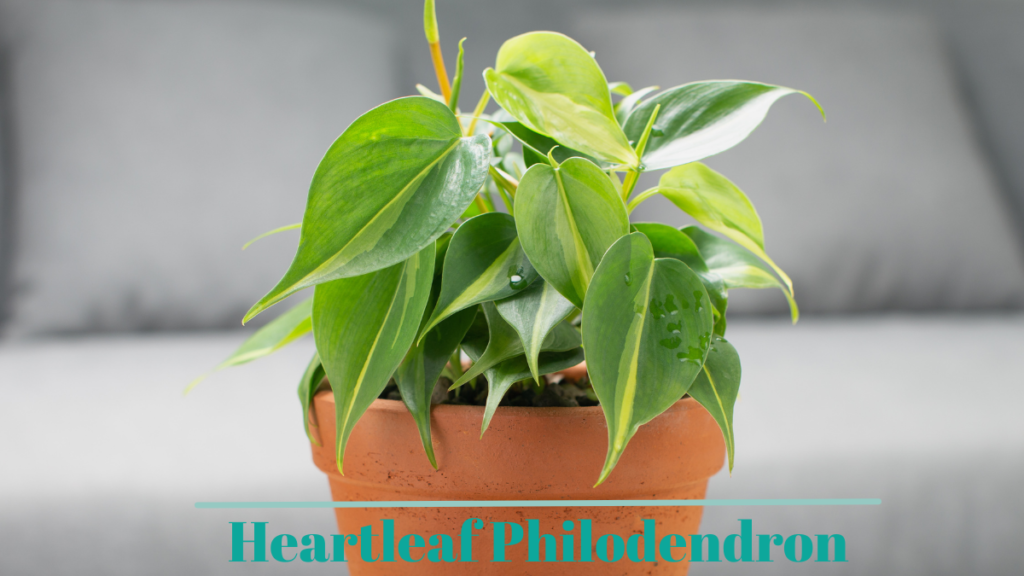
Heartleaf Philodendron Houseplant Care at a Glance
| Name | Heartleaf Philodendron |
| Scientific Name | Philodendron hederaceum formerly called Philodendron cordatum |
| Care Level | Easy |
| Light | Bright, Filtered Light. Can Tolerate Low Light. |
| Daytime Temperature | 70 to 80 F (21-26C) |
| Night Time Temperature | 60 to 70 F (15-21C) |
| Water | Moderate Water |
| Humidity | High Humidity |
| Potting | Well-draining, organic, all-purpose potting mix |
| Fertilizer | Once a month during the growing season. Every other month in the winter. |
| Air Purifying Plant | Removes formaldehyde |
| Toxic to Pets and Humans | Toxic |
Heartleaf Philodendron: Common Names
Heartleaf Philodendron is also called Parlor Ivy, Cordatum, Heart-leaf philodendron, sweetheart plant, and Philodendron.
Heartleaf Philodendron: Size
Your Heartleaf Philodendron’s stems can grow quite long, easily to 8 feet long if you let them. The heart-shaped leaves of your Heartleaf Philodendron typically grow to 2-4 inches.
Heartleaf Philodendron: Toxic to Dogs?
Heartleaf Philodendrons are toxic to dogs (source: ASPCA). Don’t let your dog chew on the leaves of the Heartleaf Philodendron plant because it contains calcium oxalate crystals. The crystals can cause vomiting and difficulty breathing. It can also result in swelling of lips, tongue, and mouth and excessive drooling. Keep it out of reach from your dog!
Heartleaf Philodendron: Toxic to Cats?
Heartleaf Philodendrons are toxic to cats (source: ASPCA). Keep it away from your cat because it contains calcium oxalate crystals. The crystals can cause vomiting and difficulty breathing. It can also result in swelling of lips, tongue, and mouth and excessive drooling.
Heartleaf Philodendron: Toxic to Humans?
Heartleaf Philodendrons are toxic to humans. Keep it in a hanging basket or high up on a bookshelf so it is away from small children. Teach older children the danger of Heartleaf Philodendrons. Don’t let children chew on the leaves of the Heartleaf Philodendron plant because it contains calcium oxalate crystals. The crystals can cause vomiting and difficulty breathing. It can also result in swelling of lips, tongue and mouth and excessive drooling. If you see any of these symptoms and suspect ingestion of Heartleaf Philodendron plants, call poison control immediately! Also, call your doctor once you start seeing adverse reactions in children.
Light
Heartleaf Philodendron: Sun or Shade?
Heartleaf Philodendron grows best in bright filtered light locations. However, it can tolerate a wide range of lighting conditions. Your Heartleaf Philodendron will thrive in artificial light and low light as well.
Water
How Often Should You Water Your Heartleaf Philodendron?
Your Heartleaf Philodendron has moderate water requirements. Water your Heartleaf Philodendron when the soil feels dry. The best way to tell when it is time to water your Heartleaf Philodendron is to feel the soil. Stick your finger in the soil 1 inch deep. If it feels dry, it’s time to water your Heartleaf Philodendron.
What Type of Water Should You Use When Watering Your Heartleaf Philodendron?
Your Heartleaf Philodendron can be watered with tap water but be mindful of the water temperature that you are using to water your Heartleaf Philodendron. Don’t use straight cold water from the tap to water your Heartleaf Philodendron. Heartleaf Philodendron prefers cool water that is not hot and not cold. When you turn on the cold water from the faucet add a little bit of warm water. You can also get to this ideal temperature by filling a watering can or pitcher with water and leaving it out overnight until the water is at room temperature.
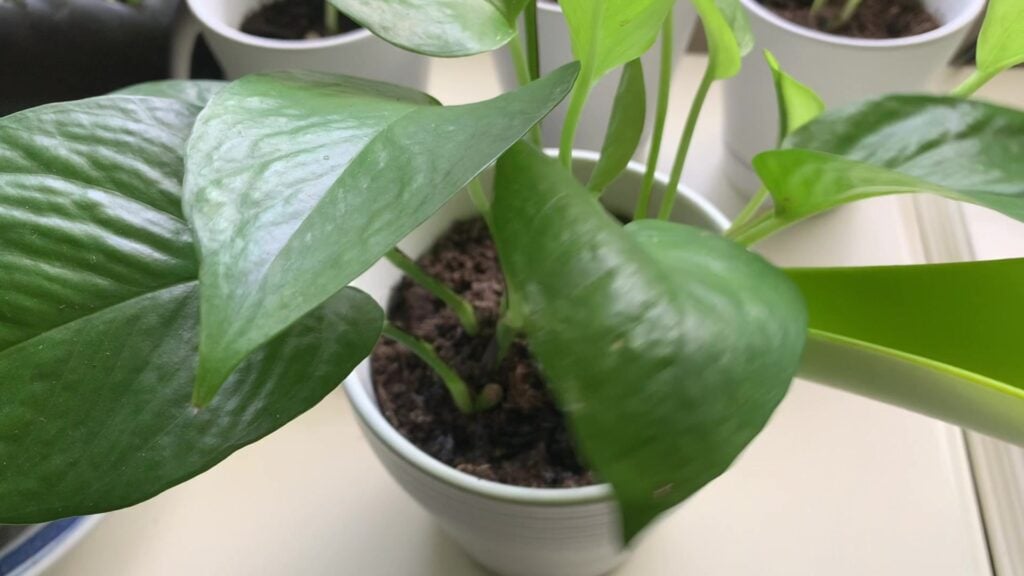
How Do You Make Sure There is Proper Drainage for Your Heartleaf Philodendron?
Your Heartleaf Philodendron Good drainage is important, you don’t want your Heartleaf Philodendron to sit in soggy soil. Make sure there are drainage holes at the bottom of the pot. After watering your Heartleaf Philodendron and you see water draining out of the pot’s drainage holes, make sure you empty out the accumulated water in the saucer. Don’t let your Heartleaf Philodendron’s pot sit in this puddle of water. It will cause root rot!
Do You Need to Mist Your Heartleaf Philodendron?
Your Heartleaf Philodendron is a houseplant that likes humid conditions. You should increase indoor humidity. Turn on the humidifier. Mist your Heartleaf Philodendron frequently with a spray bottle.
Soil
What Type of Potting Mix is Best for Your Heartleaf Philodendron?
Your Heartleaf Philodendron needs a well-draining, organic all-purpose potting mix.
How Do You Know When To Repot Your Heartleaf Philodendron?
Repot your Heartleaf Philodendron every 2 years. It’s best to repot in the Spring or Summer. Repot your Heartleaf Philodendron in a container with a diameter 4 inches larger than the current pot.
Check out my Step by Step Guide on How to Repot Heartleaf Philodendron
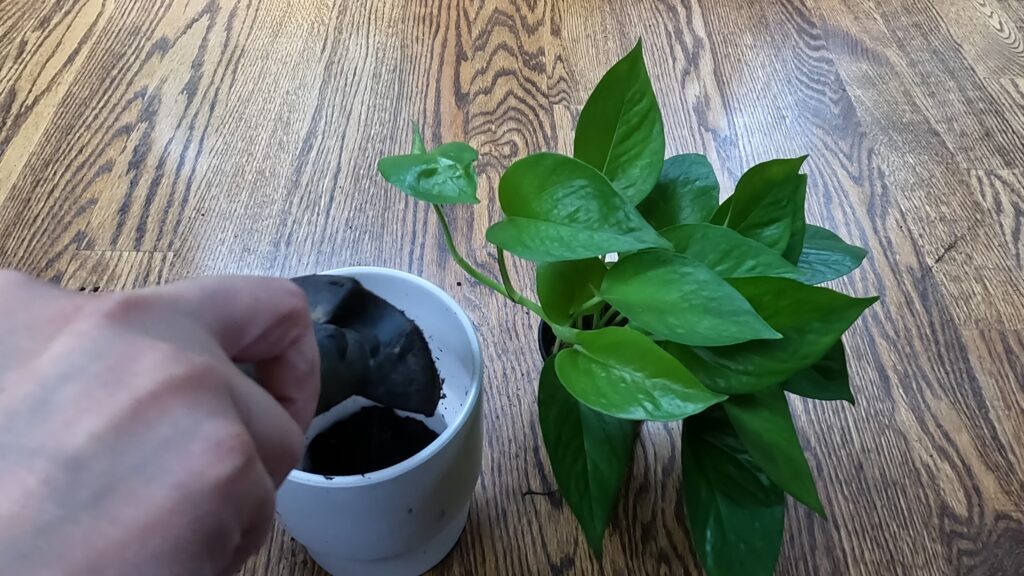
Fertilizer
Do You Need to Fertilize Your Heartleaf Philodendron?
Your Heartleaf Philodendron should be fertilized once a month during the growing season. During the winter months, fertilize every other month.
What Fertilizer Should You Use on Your Heartleaf Philodendron?
Use liquid or powder, organic fertilizer with a higher ratio of nitrogen on your Heartleaf Philodendron.
Propagation
How Do You Propagate Your Heartleaf Philodendron?
Your Heartleaf Philodendron Heartleaf Philodendron Plant is easy to propagate. You can propagate Heartleaf Philodendron plant by stem tip cutting. Below are steps on how to propagate Heartleaf Philodendron Plant by stem tip cutting:
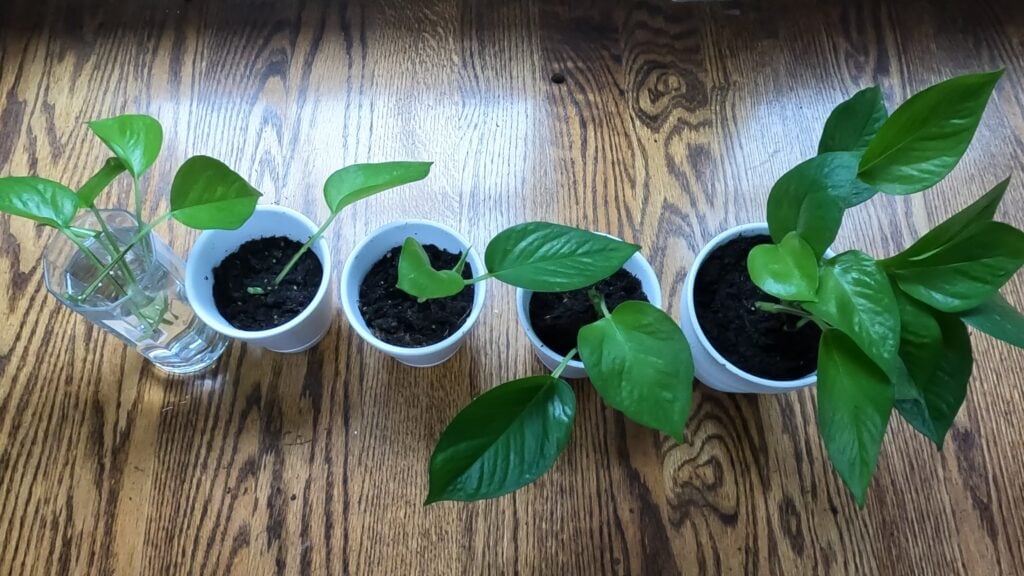
1. Take a Stem Tip Cutting of Heartleaf Philodendron Plant (include a node)
Pick a stem with a node. Cut below the node.
2. Place Heartleaf Philodendron Stem in a Jar of Water
Place the Heartleaf Philodendron stem into a jar of water and wait for it to grow roots. To help it focus its energy on growing roots, make sure your stem has a maximum of 2 leaves. Cut off extra leaves as needed.
Another way to stimulate root growth is to dip your stem cutting in root hormone and plant it in moist sand. I personally prefer the jar method so you can easily see the roots come out. Know that not all stem cuttings of Heartleaf Philodendron will grow roots, so to be safe, cut a few stem cuttings so you will at least get one with roots.
3. Plant Stem Cutting in a New Pot
Once the roots grow, plant these stem cuttings into a new pot. Water the new plant immediately after planting. Then water every 2-3 days until the roots are established.
4. Place New Heartleaf Philodendron Plant in a Spot with Bright Indirect Sun
Place your new Heartleaf Philodendron plant in a spot with bright indirect sunlight. Don’t put it in direct sunlight.
Common Problems of Heartleaf Philodendron Care
The most common problems that affect Heartleaf Philodendron are aphids, root rot, and yellowing leaves.
Heartleaf Philodendron Problem: Looks Wilted (Soil is Wet)
Problem: Your Heartleaf Philodendron looks wilted even if the soil is wet. Check for root rot by pulling the plant out and examining the roots. If the roots of your Heartleaf Philodendron plant look mushy (healthy roots are firm) and the roots are gray to black in color, these are telltale signs of root rot.
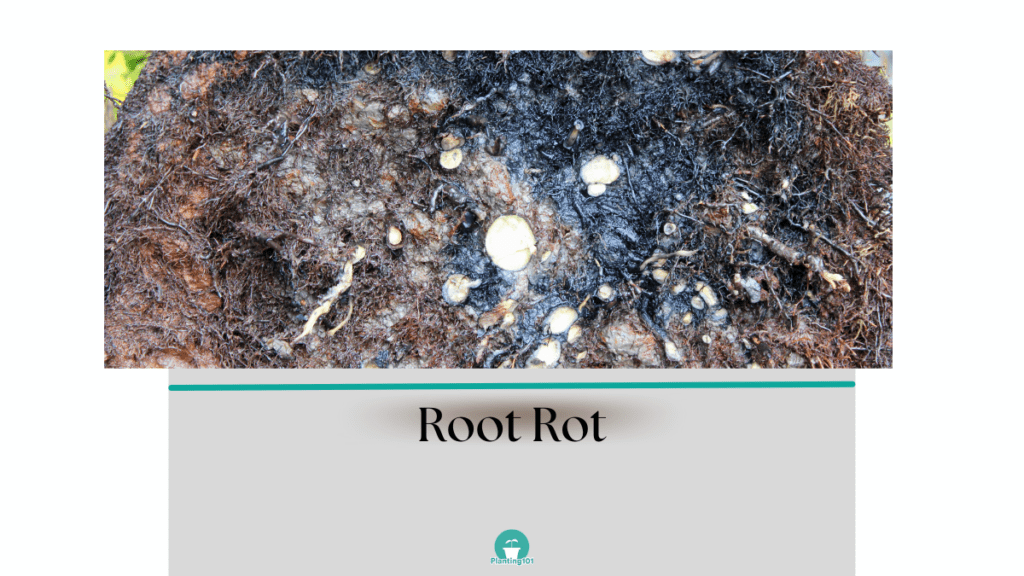
Cause: Root rot is caused by fungus and is a serious problem for your Heartleaf Philodendron. Root rot is a result of wet soil due to overwatering or poor drainage.
Solution: When your Heartleaf Philodendron is afflicted with root rot the chance of survival is slim. Your best course of action is to throw your Heartleaf Philodendron out and start over with a new plant. This time don’t overwater your Heartleaf Philodendron and make sure there is good drainage in the pot.
Heartleaf Philodendron Problem: Lots of tiny green, grey, and brown insects under the leaves of your Heartleaf Philodendron
Problem: You see a lot of tiny green, gray, and brown insects all over the underside of the leaves of your Heartleaf Philodendron. There are also sticky clear residues on leaves and stems. Plus the tips of the stems have curled up and look deformed.
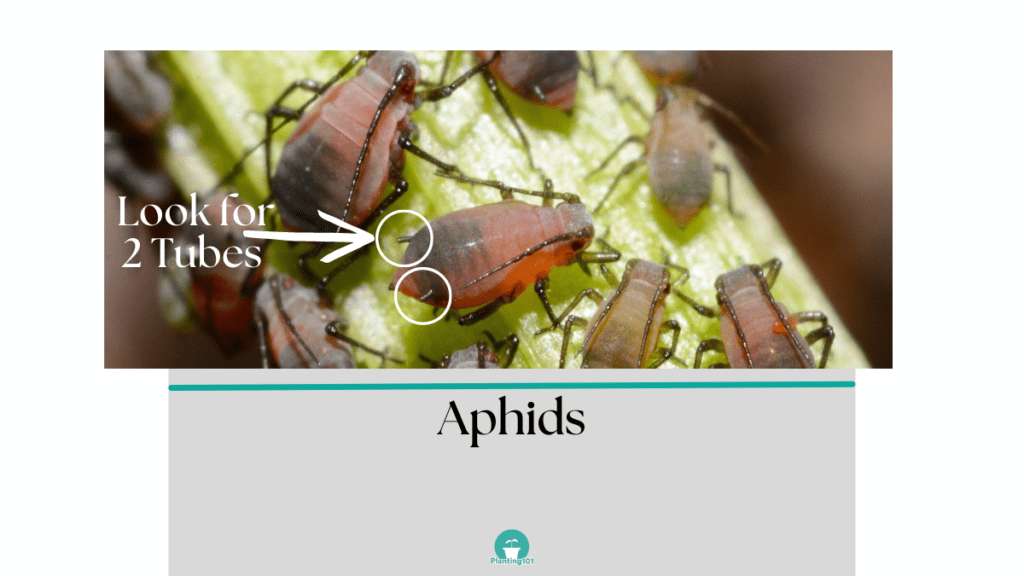
Cause: Aphids could be the problem but you should make sure by taking a close look at the insects. There should be 2 tubes on the backside of the insects. Use a magnifying glass to identify aphids.
Solution: Aphids are common in houseplants. You can get rid of aphids by washing the aphids off with water or soapy water. You can also use rubbing alcohol. Or spray your Heartleaf Philodendron plant with insecticidal soap and horticultural oil to get rid of the aphids.
Check out our article on how to make your own homemade pesticides using baby shampoo: How to Make Horticultural Oil and How to Make Insecticidal Soap
Heartleaf Philodendron Problem: Yellowing leaves
Problem: If you see yellowing leaves on your Heartleaf Philodendron, that is a sign that something is wrong.
Cause: If you see yellowing leaves with black dots then it could be a fungal infection. Yellow leaves can also be a sign of nutrient deficiency. Yellowing leaves can also be caused by hot, afternoon sunlight or overwatering.
Solution: Check to see if your Heartleaf Philodendron is being overwatered or placed where there is hot, afternoon sun. If so, move your Heartleaf Philodendron and decrease watering. Also check to see if there is nutrient deficiency, if so, it’s time to fertilize your Heartleaf Philodendron.
Heartleaf Philodendron: Air Purifying Plant
Heartleaf Philodendron is an air purifying plant. It will clean the air by removing air pollutants such as formaldehyde. In a NASA research study, Heartleaf Philodendron is effective in removing formaldehyde.
Cleaning Heartleaf Philodendron Houseplant
What’s the best way to clean the leaves of your Heartleaf Philodendron?
Dust accumulates on your Heartleaf Philodendron leaves over time. The layer of dust decreases the plant’s ability to photosynthesize. Periodically wiping down the leaves of your Heartleaf Philodendron with a damp cloth will help keep your plant healthy. You can also use a duster or dry duster cloth to wipe off the layer of dust on leaves.
You May Also Be interested in these Hanging Houseplants
How to Care for your Pothos (Epipremnum aureum)
How to Care for your Satin Pothos
How to Care for your Heartleaf Philodendron
How to Care for Your String of Pearls Plant
How to Take Care of Your Boston Fern (Nephrolepsis exaltata)
Check out my other Heartleaf Philodendron Plant Care
Guides
Beginner’s Guide: How to Care for your Heartleaf Philodendron
Quick Start Guide: What to do with New Heartleaf Philodendron when You Bring it Home (video)
How to Repot Heartleaf Philodendron (video)
Planting 101 participates in affiliate programs including Amazon Associates Program and may earn commission from qualifying purchases at no extra cost to you. Thank you for your support.

